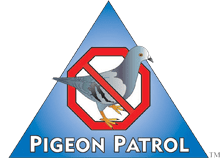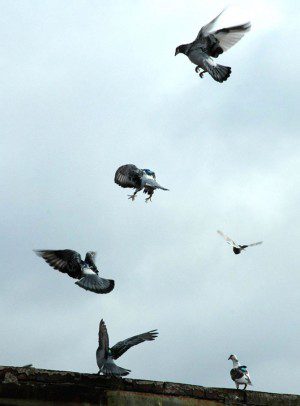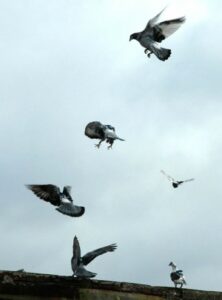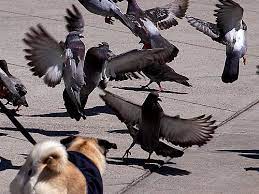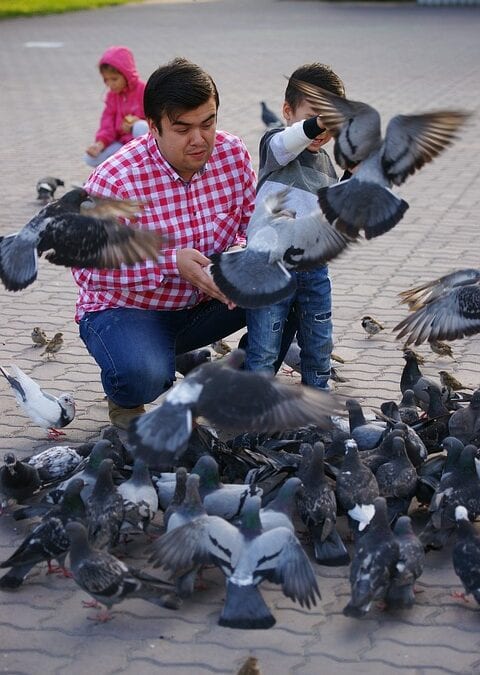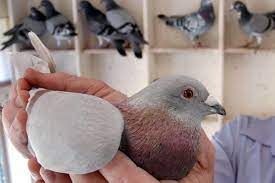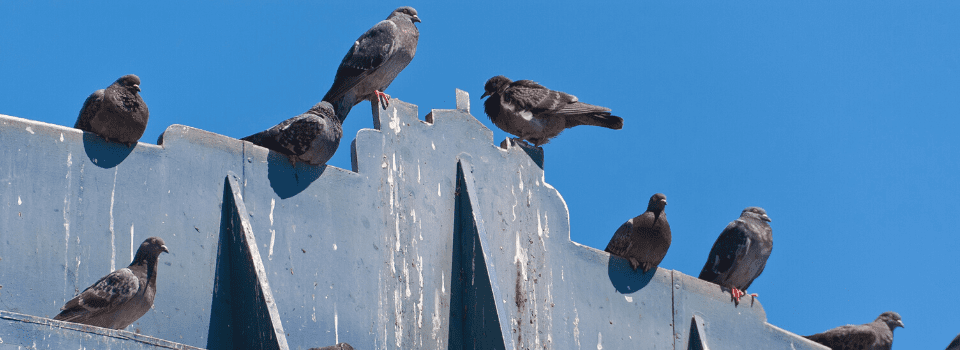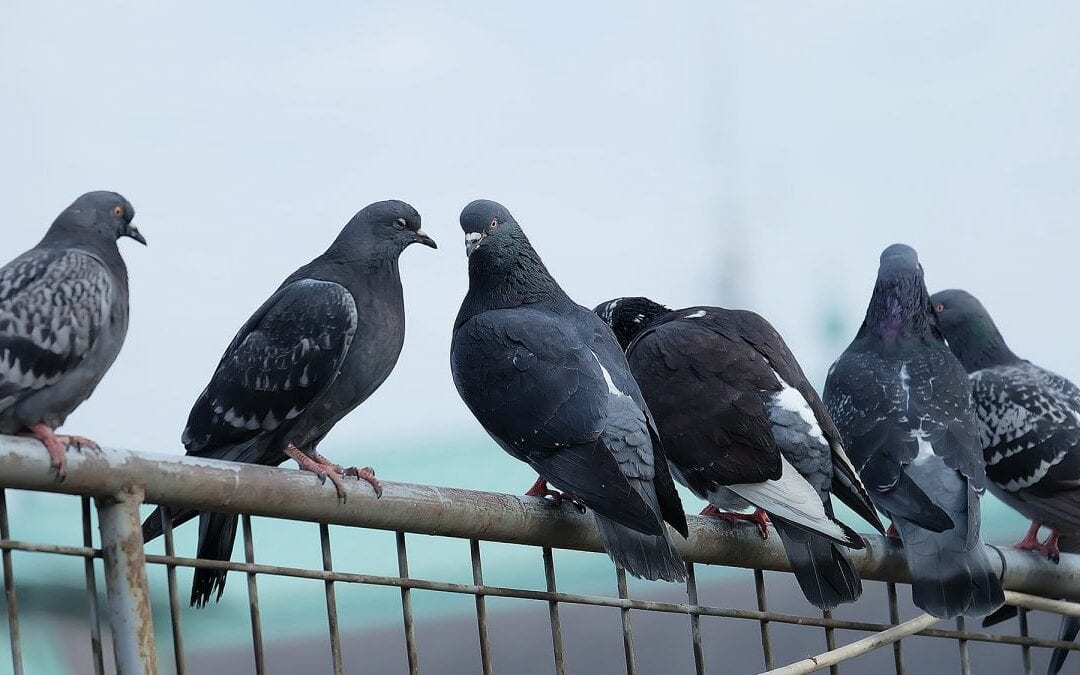
Habit and Habitat of Pigeon
The Blue Rock Pigeon lives in perfect freedom in ledges, fissures and holes of rocks, forts, old buildings and side walls of wells. It prefers to live in those places of towns and cities which have plenty of coarse grains. Thus, their favourite resorts include big buildings, godowns, grain markets, temples, mosques, churches, tombs, railway stations and office buildings. They never nest on trees.
Nature:
The pigeons are inoffensive, harmless, timid and gregarious birds. During breeding season solitary couples make a simple, flat and artless nest of small sticks and thin roots, etc., at all sorts of places where there is some shelter from rain and sun. The eggs are laid in these nests and further development also occurs there. During winter, the pigeons collect into flocks which may be composed of several hundred individuals.
Food and Feeding:
The pigeons are vegetarians, feeding on grains, pulses, seeds of fruits and grasses. Sometimes they feed on insects, snails and slugs probably mistaken for seeds. They regularly leave their places of retreats and settlings during mornings and evenings, and collect into flocks to plunder the nearby fields.
Locomotion:
The pigeons are provided with long powerful wings which are well adapted for swift and strong flight. They walk on their two legs and such kind of walking is called bipedal gait. They walk on ground in search of food with great rapidity. When startled, they rise suddenly by striking the ground with their wings producing a crackling sound.
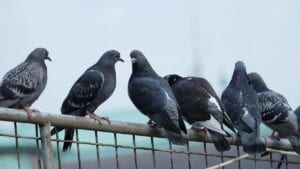
Sound:
The pigeons do not sing, chirp or screech but produce a characteristic sound which resembles the syllables gootur-goon, gootur-goon.
Family Life:
They lead a monogamous life, i.e., one male lives and copulates with only one female throughout the life.
ADVERTISEMENTS:
Reproduction and Incubation:
The internal fertilisation is performed by copulation in which temporary union of male and female takes place at their cloacal ends, i.e., cloacae of the two oppose each other, and transfer of sperms occurs directly into the urodaeum of female. The pigeons are oviparous, the eggs are laid in the nest and are incubated by the warmth of the parent’s body and hatching occurs after a fortnight.
Parental Care:
The newly hatched youngs are immature, helpless and featherless and are nourished by both parents by a fatty, curdy secretion, the pigeon’s milk, which is secreted in their crop. The parental care and homing instinct are well developed in pigeons.
Distribution:
The Blue Rock Pigeons are widely distributed in Palaearctic (Europe) and Oriental regions (Asia) and North Africa. They are especially plentiful in Palestine city of Israel. In India, two subspecies of Columba livia are namely, Columba livia neglecta is found up to 13,000 feet on the Himalaya.
Another Columba livia intermedia is smaller and darker race, which occurs throughout India. The Indian wild pigeon differs from that of European in having the rump or lower part of the back ash-coloured, while Indian pigeon is white.
Pigeon Patrol Products & Services is the leading manufacturer and distributor of bird deterrent (control) products in Canada. Pigeon Patrol products have solved pest bird problems in industrial, commercial, and residential settings since 2000, by using safe and humane bird deterrents with only bird and animal friendly solutions. At Pigeon Patrol, we manufacture and offer a variety of bird deterrents, ranging from Ultra-flex Bird Spikes with UV protection, Bird Netting, 4-S Bird Gel and the best Ultrasonic and audible sound devices on the market today.
Voted Best Canadian wholesaler for Bird Deterrent products ten years in a row.
Contact us at 1- 877– 4– NO-BIRD, (604) 585-9279 or visit our website at www.pigeonpatrol.ca
Pigeon/Pigeon Patrol / Pigeons Roosting / Vancouver Pigeon Control /Bird Spikes / Bird Control / Bird Deterrent / Pigeon Deterrent? Surrey Pigeon Control / Pest /Seagull deterrent / Vancouver Pigeon Blog / Birds Inside Home / Pigeons in the cities / Ice Pigeons/ What to do about pigeons/ sparrows , Damage by Sparrows, How To Keep Raccoons Away, Why Are Raccoons Considered Pests/ De-fence / Pigeon Nesting/ Bird Droppings / Pigeon Dropping/ woodpecker control/ Professional Bird Control Company/ Keep The Birds Away/ Birds/rats/ seagull/pigeon/woodpecker/ dove/sparrow/pidgeon control/pidgeon problem/ pidgeon control/flying rats/ pigeon Problems/ bird netting/bird gel/bird spray/bird nails/ bird guard
